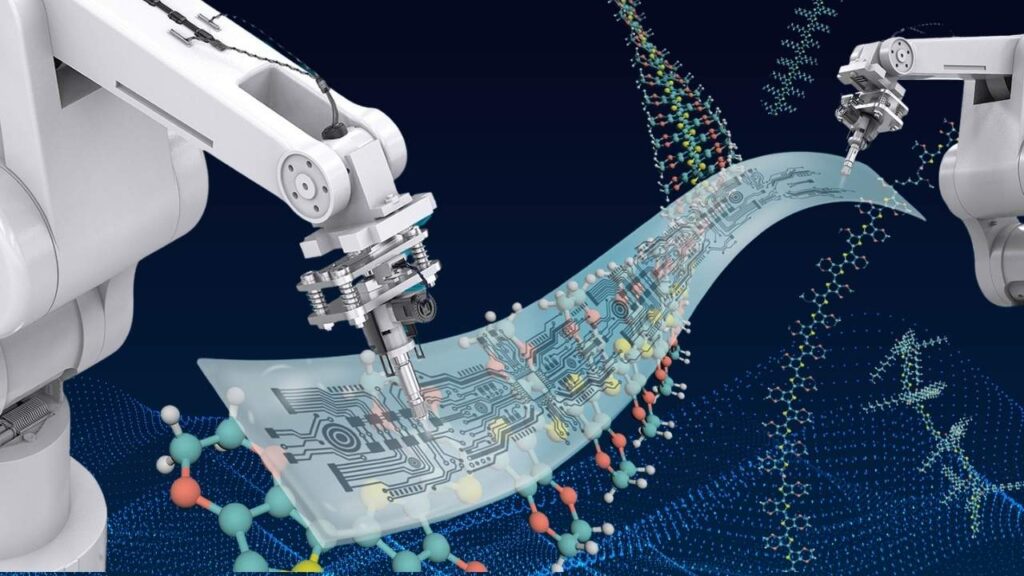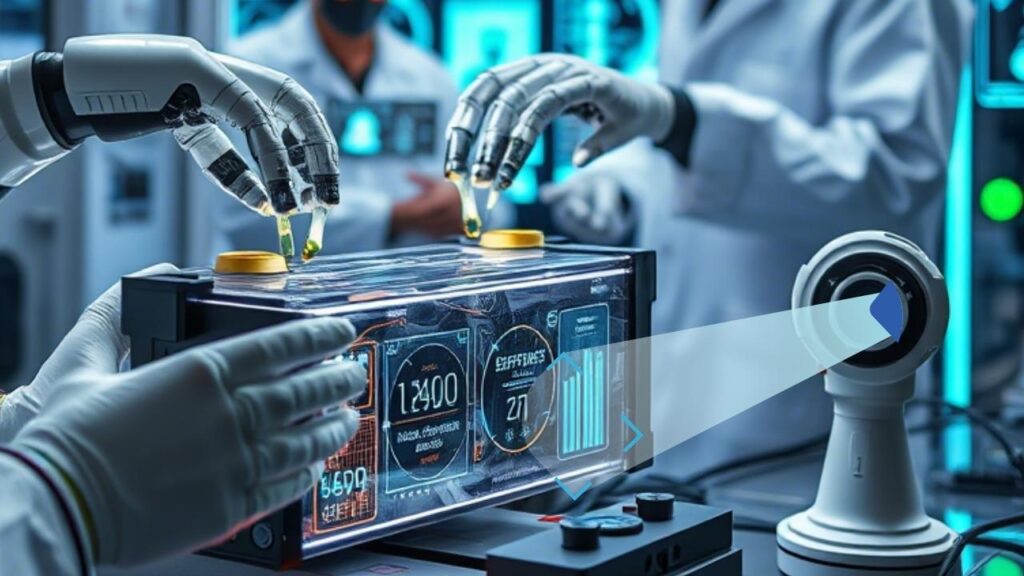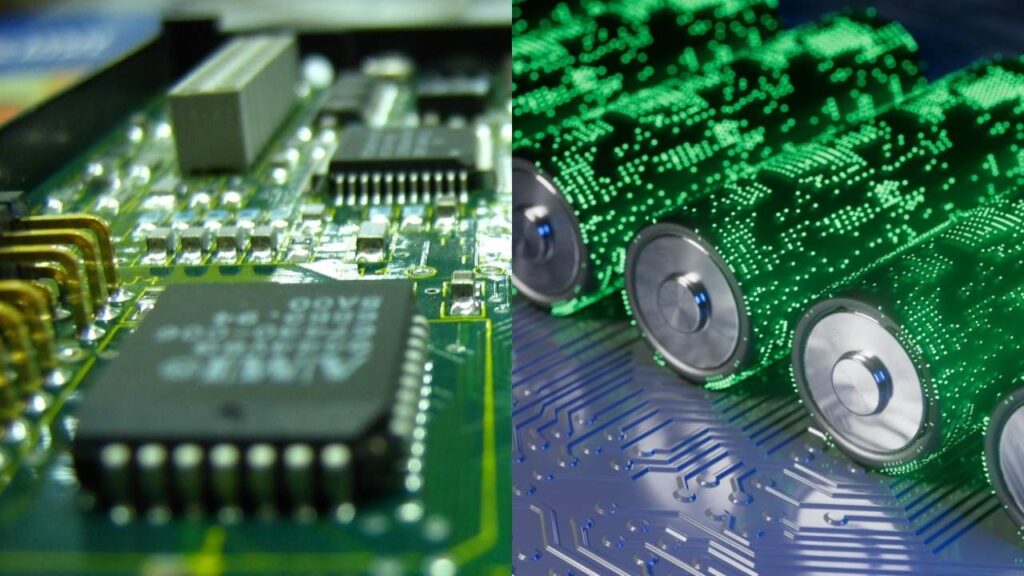AI Meets Materials Science: In recent years, AI meets materials science has become more than just a futuristic idea—it’s a present-day revolution. What once took scientists decades of trial and error in the lab is now happening in weeks or even days, thanks to the powerful capabilities of machine learning (ML) and artificial intelligence (AI). From developing new battery materials to discovering compounds with never-before-seen properties, AI is transforming how we explore and create materials.

This breakthrough isn’t just for tech giants or elite scientists. The blending of AI and materials science has practical implications across industries—from clean energy and aerospace to healthcare and electronics. In this article, we’ll break down how AI is transforming the world of materials discovery, why it matters, and how professionals and curious readers alike can understand and leverage this trend.
Table of Contents
AI Meets Materials Science
| Topic | Details |
|---|---|
| Main Theme | How AI and machine learning are transforming materials science |
| Impact on Discovery Speed | Reduced material discovery time from decades to days |
| Notable Project | DeepMind’s GNoME project predicted over 2 million materials, including 381,000 stable compounds |
| Autonomous Labs | A-Lab at LBNL synthesized 41 new materials in 17 days |
| Key Sectors Benefiting | Energy storage, electronics, semiconductors, sustainability |
| Professional Opportunities | Data scientists, materials engineers, chemists, AI researchers |
| Useful Resource | Pacific Northwest National Laboratory – PNNL |
The fusion of AI and materials science is reshaping how we think about discovery. From drastically reducing R&D timelines to unveiling entirely new materials with futuristic applications, machine learning is becoming an indispensable tool for scientists and engineers.
As this technology matures, the gap between idea and implementation will continue to shrink, unlocking innovations that can tackle some of our biggest global challenges—from climate change to healthcare and energy.
Why Is This a Big Deal?
Traditional materials discovery involved a lot of guesswork, manual experiments, and time-consuming simulations. Scientists would spend years tweaking variables just to develop a slightly more efficient battery or a stronger alloy. But now, machine learning algorithms can crunch thousands of variables at once and predict how different materials will behave before a single experiment is done.
Imagine trying to find a new LEGO piece by digging through a giant pile—now imagine having an AI assistant that can instantly scan the entire pile and hand you the perfect piece. That’s essentially what AI is doing for scientists.
How AI Transforms Materials Science
1. Predictive Modeling with Machine Learning

AI models, especially deep learning and graph neural networks (GNNs), can predict the properties of unknown materials by learning patterns from existing data. For example, one recent project used GNNs to predict 2.2 million new crystal structures, of which 381,000 were found to be stable. This dramatically expanded the known materials database and opened new possibilities for innovation.
These tools can forecast properties like:
- Conductivity
- Strength
- Reactivity
- Melting point
This not only saves time but also drastically reduces costs.
2. Self-Driving Labs and Automated Discovery

Welcome to the future: self-driving labs. These are AI-guided robotic labs that conduct, monitor, and adjust experiments automatically. A notable example is a lab that synthesized 41 out of 58 AI-predicted materials in just 17 days.
AI decides which experiments to run, analyzes results in real-time, and adjusts the next set of experiments accordingly—much faster and more accurately than humans can.
3. Accelerated Testing and Validation

AI isn’t just helping to find new materials—it’s also speeding up the testing phase. Advanced platforms can model how a material will perform in different real-world conditions—such as extreme heat or corrosive environments—without having to conduct all those tests in the lab.
This approach significantly reduces research and development (R&D) timelines.
4. Real-World Use Cases
AI-powered materials science is already making waves in various sectors:
Energy Storage

Discovery of solid-state electrolytes that are safer and more efficient than lithium-ion. Some companies are using AI to design next-gen batteries for electric vehicles.
Electronics

AI helps design 2D semiconductors for faster chips and better performance, as well as innovations in flexible electronics used in wearables and foldable screens.
Sustainable Materials
AI finds biodegradable polymers and low-emission concrete alternatives, and helps develop catalysts that efficiently convert CO₂ into useful fuels.
Who’s Leading the Charge?
Big Tech
Companies like DeepMind and Microsoft are building cutting-edge AI platforms specifically designed to help discover materials faster and more efficiently.
Research Institutions
Top universities and national labs—including MIT, Stanford, and Berkeley Lab—are integrating AI with physical science research to push the boundaries of discovery.
Startups and Industry
Startups and R&D-focused firms are leveraging AI to specialize in faster prototyping, sustainable materials development, and advanced simulations.
How Can You Get Involved?
Whether you’re a student, professional, or a tech enthusiast, here are ways to explore the field:
For Students and Beginners
- Learn the basics of materials science and machine learning.
- Use open platforms and educational sites to practice.
For Professionals
- Explore certifications in data science for materials.
- Attend industry events and conferences in AI and materials research.
For Companies
- Invest in AI-driven platforms for R&D.
- Partner with academic labs for joint research projects.
Startup Uses Organic Electronics to Build Biodegradable Smart Sensors
Optical Chips Go Mainstream: Apple’s New AI Processor Uses Light Instead of Electricity
Photonics in Space: How NASA Is Using Laser Communication to Boost Deep-Space Data Transfer
FAQs About AI Meets Materials Science
Q1: Is AI replacing scientists?
No. AI is a tool, not a replacement. It speeds up research but still requires human oversight, creativity, and domain knowledge.
Q2: Can AI find materials we haven’t even imagined yet?
Yes. AI doesn’t suffer from human biases and can suggest non-intuitive combinations that scientists might never consider.
Q3: How accurate are AI predictions in materials science?
Modern models like GNNs have high predictive accuracy, especially when trained on quality data. However, experimental validation is still essential.
Q4: What skills should I learn to work in this field?
Programming (Python, TensorFlow)
- Machine learning
- Materials characterization
- Data analysis



















